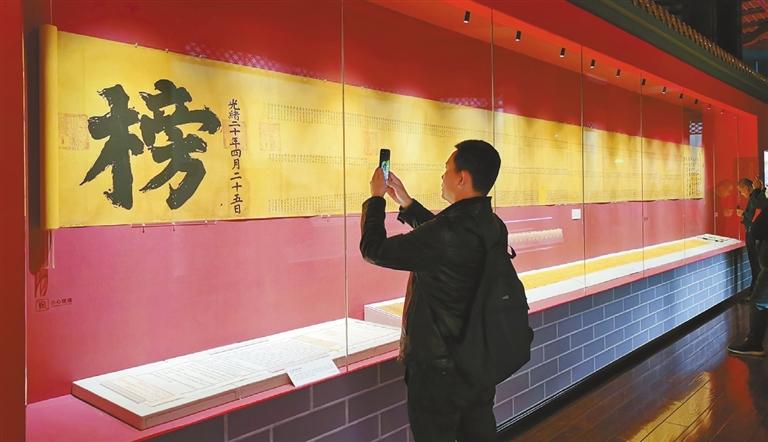
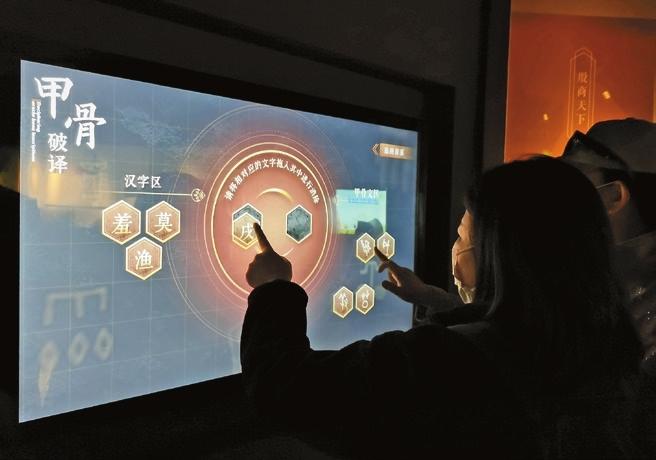
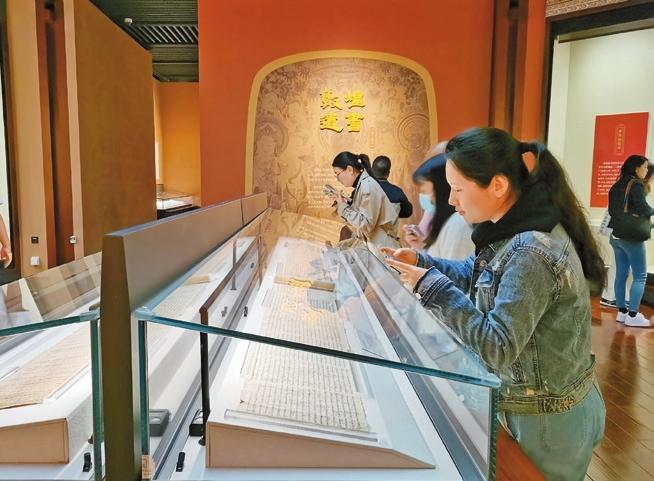
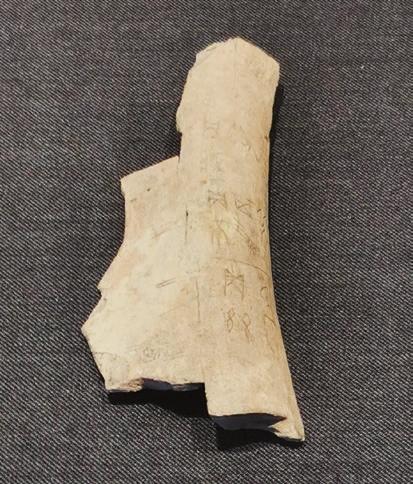
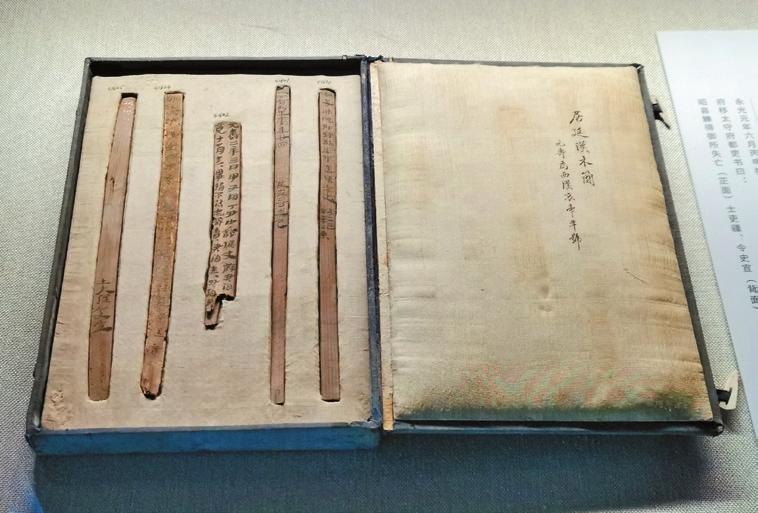
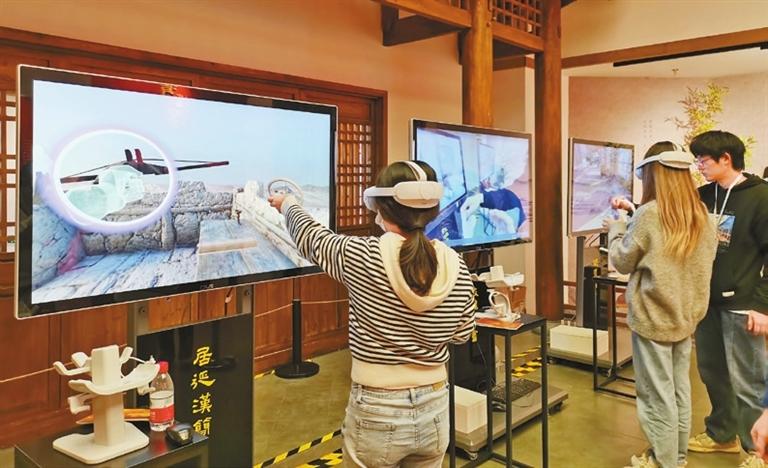
Cao Zhen caozhen0806@126.com MUSEUMGOERS may have already seen Chinese oracle-bone inscriptions, Han Dynasty (206 B.C.-220 A.D.) bamboo slips and wooden tablets, Dunhuang manuscripts, and the Ming (1368-1644) and Qing (1644-1911) imperial documents at various exhibitions in the past. Now they have the opportunity to admire artifacts from all four of the categories, collectively known as the four great discoveries of ancient literary artifacts in China’s early 20th century, at a grand exhibition at the Shenzhen Museum’s Ancient Art Division. Organized by the National Library of China, the First Historical Archives of China, Gansu Jiandu Museum, Dunhuang Academy, and Shenzhen Museum, the exhibition showcases 238 literary treasures and replicas, providing a rare glimpse into the origins of Chinese civilization. Revered as the foundation of China’s cultural and literary heritage, these four great discoveries have captivated scholars and historians for centuries. Upon entering the exhibition halls, visitors are greeted by the sight of Chinese oracle-bone inscriptions, which date back over 3,000 years to the Shang Dynasty (1600-1046 B.C.). Mostly used for divination, these early Chinese pictographs were carved onto tortoise shells and animal bones, offering a unique window into Chinese ancestors’ beliefs. Continuing the journey through time, the exhibition then showcases Han Dynasty inscribed bamboo slips and wooden tablets. These artifacts were excavated from the Juyan border fortress, situated at the juncture of modern Inner Mongolia Autonomous Region and Gansu Province. These vast ancient texts, mainly on border lives and military, have greatly contributed to research on inscribed bamboo slips and wooden tablets and the history of the Han Dynasty. The exhibition moves on to display the Dunhuang manuscripts, a collection of religious texts and documents produced between the 4th and 11th centuries. These manuscripts were discovered in the Mogao Caves in Gansu Province. They demonstrate the diverse cultural influences found in Dunhuang, which embraces elements from both the East and the West. As the exhibition reaches its culmination, the Ming and Qing imperial documents take center stage, presenting a glimpse into China’s more recent past. Ancient maps, imperial instructions and orders, records of imperial chores, and the Golden Lists of the Qing Dynasty Imperial Examination reflect the intricate details of imperial life. The exhibition goes beyond static displays. Incorporating innovative modern technologies such as interactive screens and virtual reality experiences, the exhibition provides a dynamic learning experience, enabling a deeper understanding of the artifacts’ historical significance. Dates: Until March 10, 2024 Booking: WeChat account “iszbwg” Venue: Shenzhen Museum’s Ancient Art Division, Futian District (深圳博物馆古代艺术馆) Metro: Line 9 to Hongling South Station (红岭南站), Exit A | 
